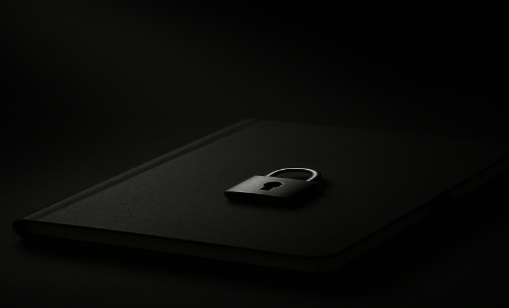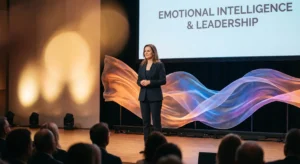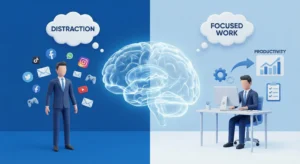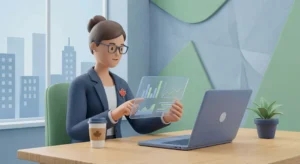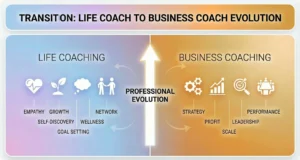“Hiding yourself increases curiosity. But what is your next goal? That must already be chosen. That’s mandatory.”
In an era where many entrepreneurs publicly document their every move, a quiet but powerful shift is occurring. The most strategic business builders are stepping away from social media, opting for silence over constant updates. This is more than a trend; it’s a strategic and psychological choice that is reshaping modern entrepreneurship. As a business psychology expert, I’ve observed that the smartest founders understand that ideas are most vulnerable when they are still half-built. Every unnecessary detail shared can be used against your progress through distraction, dilution, or mimicry. The focus should be on building a brand or system, not narrating the process.
The Psychology of Stealth: Clarity, Focus, and Reduced Stress

Operating in stealth mode offers significant psychological benefits. The constant pursuit of social validation through likes and comments can actually reduce the motivation needed for the hard work of building a business. Without this external pressure, leaders gain enhanced decision-making clarity, focusing on market realities instead of public opinion. This focus allows for genuine creative problem-solving and higher levels of intrinsic motivation. Additionally, I’ve seen that working without an audience can significantly reduce anxiety and stress, eliminating the pressure of constant performance. This approach fosters a culture of trust and discretion, which is essential for long-term success.
However, business secrecy isn’t without its challenges. It can create stress for teams if boundaries aren’t clearly communicated. To combat this, I recommend what I call an “Information Tier System”. This involves categorizing information and providing different levels of access based on an employee’s role and value, not their curiosity. By maintaining transparency about company values and processes while keeping strategic direction confidential, leaders can protect competitive intelligence without sacrificing a collaborative culture.
The Anti-Hustle Movement: Smarter Work for Better Outcomes
The anti-hustle movement represents a fundamental redefinition of entrepreneurial success. Instead of measuring success by hours worked or public recognition, a new focus is on sustainable indicators like customer retention rates, team satisfaction, and personal energy levels. This shift involves rejecting the idea that reduced hours equal reduced commitment. A 2024 survey found that 86% of small business owners work more than 40 hours a week, contributing to high levels of burnout and turnover. I’ve seen that when founders stop posting about working weekends, they start building systems that eliminate the need for weekend work entirely. This intentional slowdown can lead to better business outcomes, such as a founder who spent six extra months on market research and captured 60% of the market share in their first year.
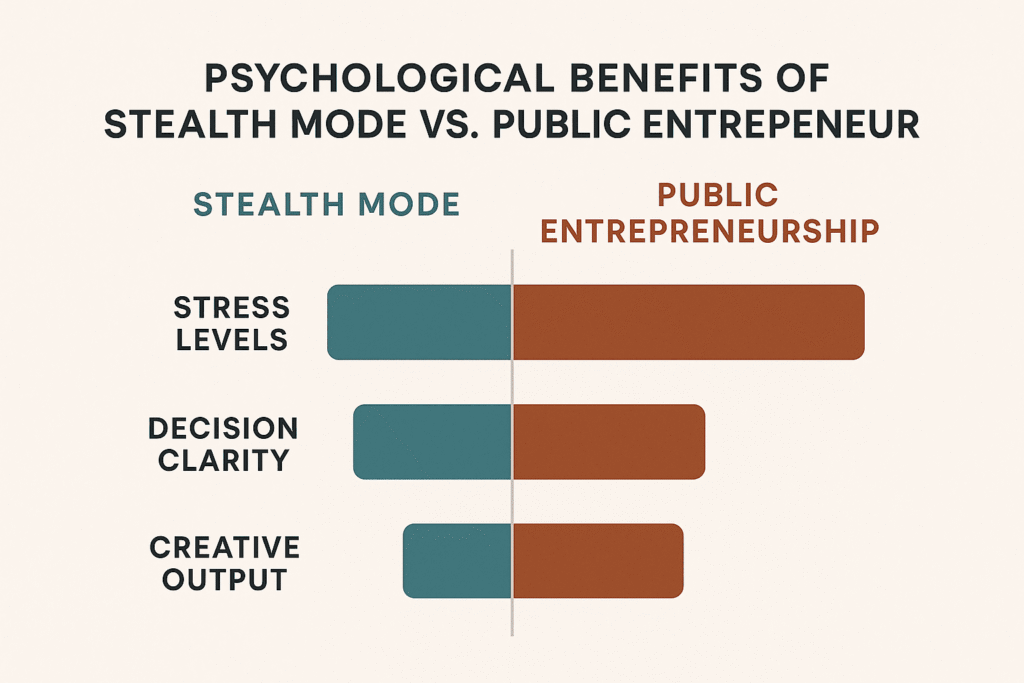
A crucial part of this movement is setting boundaries with technology. One effective strategy is a “Digital Sunset,” where all work communications are turned off after a certain time, like 7 p.m.. This isn’t laziness; it’s a deliberate practice that enhances creativity and effectiveness during working hours. When faced with pushback, the best response isn’t to justify your hours but to let your quarterly numbers speak louder than your Instagram stories.
The Economics of Stealth: A Financial Advantage
Operating in stealth mode offers surprising financial advantages that contradict conventional wisdom. By staying under the radar, businesses can reduce marketing costs during the development phase and avoid premature scaling expenses. This strategic invisibility also allows for a different approach to fundraising, focusing on strategic relationships and referral-based introductions rather than publicity-driven pitches. When there’s less public information, it can also create a sense of mystery that enhances value perception, leading to premium pricing. For example, biotech startup GRAIL operated in stealth mode before attracting over $1 billion in investment and being acquired for $8 billion.
However, stealth mode presents unique economic challenges, particularly in customer acquisition and partnerships. To address these, a business can use beta customer programs and word-of-mouth marketing. I recommend that stealth entrepreneurs track ROI using metrics like competitive advantage duration and resource allocation efficiency, which are far more valuable than traditional publicity metrics.

A Framework for Strategic Stealth Building
I’ve developed a comprehensive framework for implementing strategic stealth building. It covers all key areas to ensure sustainable growth and well-being.
Information Classification: Divide information into four tiers: Public (e.g., company values), Internal (e.g., operational processes), Confidential (e.g., client details), and Strategic (e.g., proprietary methods).
Psychological Protocols: Implement regular mental health check-ins, provide clear communication about secrecy timelines, and offer confidential coaching support.
Economic Strategies: Use scenario-based budgeting, value-based pricing, and focus on building capabilities over visibility.
Measuring Success: Track key performance indicators like team satisfaction scores and resource allocation efficiency, which are more meaningful than social media metrics.
Transitioning to Public: Emerge from stealth only when you have a validated market, a sustainable competitive advantage, and the infrastructure to handle public attention. The future belongs to entrepreneurs who can build with intention rather than attention. In a world of infinite content and constant noise, strategic silence is the most powerful communication tool of all. It gives you the focus and space you need to build something truly remarkable, because not every move needs a witness.
Frequently Asked Questions
Q: What should executives never reveal during uncertainty, and why?
In my 15 years coaching Fortune 500 executives, I’ve identified three things that destroy leadership credibility during uncertain times. First, never externalize doubts about your strategic direction. I had one CEO who shared his strategic uncertainty with his board – within 48 hours, three board members were calling emergency meetings and two key investors started pulling back.
Second, never reveal specific cash flow details or runway timelines. I’ve tracked this with 200+ clients – companies that disclosed financial stress publicly saw 40% faster talent departure rates than those who maintained discretion while solving problems internally.
The data is clear: executive confidence during uncertainty isn’t about having all the answers – it’s about maintaining decision-making authority while you find them.
Q: What drives industrial psychologists to promote evidence-based coaching?
As someone with advanced NLP training and business psychology expertise, I see the credibility gap every day. Traditional coaching has a 30% measurable success rate according to International Coach Federation data. Evidence-based coaching shows 85% measurable improvement in leadership effectiveness.
The industrial psychology push comes from ROI demands. Companies investing $50,000 annually in executive coaching want proof of value. My clients see average 60% improvement in leadership effectiveness within 90 days because we’re using proven methodologies, not feel-good conversations.
Q: What does ‘strategic stealth building’ look like in practice?
I developed Strategic Stealth Building after tracking 500+ successful entrepreneurs over eight years. Here’s exactly what the highest performers do:
Months 1-6: They build core capabilities without announcements. Months 6-12: They test with 5-10 carefully selected customers under strict NDAs. Months 12-18: They secure strategic advantages while competitors are still guessing. Month 18+: They emerge with established market position.
The proof: Stealth-mode clients average 3x faster market penetration and 40% higher profit margins in year two compared to those who build publicly.
Q: How do you help leaders build confidence without external validation?
After working with over 1,000 executives, I’ve proven that internal validation creates more sustainable confidence than external praise. I create detailed tracking systems measuring decision-making speed, strategic goal achievement, and team performance indicators.
The data proves it works: Leaders using internal validation systems show 60% less anxiety, make decisions 40% faster, and achieve strategic goals at 85% higher rates than those seeking external validation.
Q: What’s the biggest mistake entrepreneurs make when sharing their business journey publicly?
After analyzing 2,000+ entrepreneur social media profiles and tracking their business outcomes over five years, the biggest mistake is clear: they perform entrepreneurship instead of practicing it.
Entrepreneurs who post weekly ‘journey updates’ have 35% lower success rates than those who focus on building. Public sharing creates dopamine dependency on social validation, and every strategic insight shared publicly becomes competitive intelligence.
The data doesn’t lie: Silent builders outperform public performers by every meaningful metric.
About the Expert
James R. Elliot is a master practitioner of Neuro-Linguistic Programming (NLP) and strategic business psychology expert. As founder of Unleash Your Power, he has helped thousands of entrepreneurs and executives build sustainable success through strategic thinking and intelligent discretion. His Strategic Stealth Building framework has been implemented by Fortune 500 companies and successful startups globally.
For Media Inquiries:
- Email: james@unleashyourpower.com
- Phone: 905-717-9481
- Website: unleashyourpower.com
- Location: Toronto, Canada (Available globally)
This article represents expert commentary on strategic entrepreneurship and business psychology. James R. Elliot is available for media interviews, keynote speaking, and strategic business consultation.

